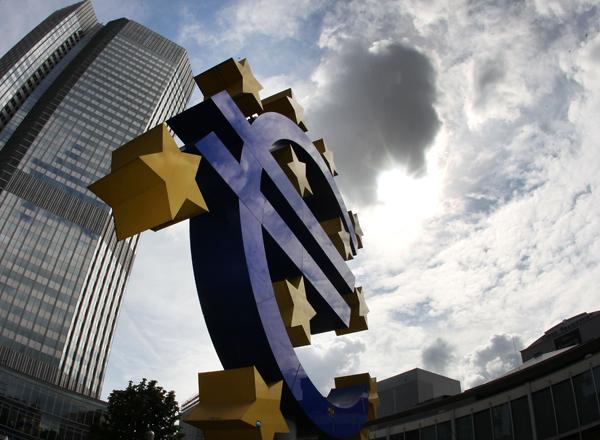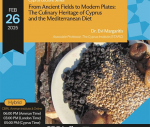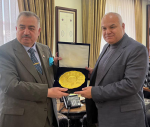You are here
US charitable giving nears pre-recession peak
By AFP - Jun 18,2014 - Last updated at Jun 18,2014
WASHINGTON — US charitable giving rose for a fourth consecutive year in 2013, nearing the record pre-recession levels of 2007, a study showed this week.
Donations from American individuals, corporations and foundations rose 4.4 per cent to $335.17 billion, according to an annual survey by Giving USA Foundation and Indiana University's school of philanthropy.
The 59th annual survey offers clues on the overall health of the US economy, the stock market and the level of optimism people are feeling.
The latest report "proves yet again that the call for support is answered generously by our citizenry," said Gregg Carlson, chair of the Giving USA Foundation.
"In fact, 2013 marked the fourth straight year of gains in total giving. I think that is news to be celebrated after the gloomy years of the Great Recession," he added.
The survey found that giving by individuals — the largest segment — increased 4.2 per cent to $240.60 billion.
But one major category, corporate gifts, declined by 1.9 per cent to $17.88 billion.
The survey found religious organisations remained the largest category of recipients, accounting for $105.5 billion, followed by education ($52 billion).
Other categories include human services, gifts to foundations, health organisations, public society benefit groups, arts, environmental and animal organisations.
The peak for charitable contributions came in 2007, when donations totalled an estimated $349.50 billion.
"The growth in giving over the past two years suggests that a return to the peak level of total giving we saw prior to the recession could occur sooner rather than later, if recent growth rates in giving continue," said Patrick Rooney, associate dean at the school of philanthropy.
According to the latest comprehensive report on how Americans give away their money, wealthy donors in the US are lavishing money on their favoured charities, including universities, hospitals and arts institutions, while giving is flat to social service and church groups more dependent on financially squeezed middle-class donors.
Reflecting the nation's widening wealth gap, some sectors fared far better than others. Adjusted for inflation, giving was up 7.4 per cent for education, 6.3 per cent for the arts and humanities, and 4.5 per cent for health organisations, while giving to religious groups declined by 1.6 per cent and giving to social service groups rose by only 0.7 per cent.
Experts with the Giving USA Foundation and the Indiana University Lilly Family School of Philanthropy, predicted that within two more years the total could match the pre-recession peak of $347.5 billion.
During and immediately after the recession, some wealthy donors shifted their giving to social service groups working to combat hunger and homelessness, according to Rooney. Now, many of those donors — including some making multimillion-dollar gifts — are refocusing their attention on higher education, the arts and other sectors long patronised by the affluent, he indicated.
The trend is readily apparent in the listings of recent major charitable gifts compiled by the Chronicle of Philanthropy, which provides news coverage of the nonprofit world.
Among the 100 largest recent gifts, which range from $7.5 million to $275 million, the recipients overwhelmingly are universities and hospitals, along with a few arts institutions. Only four of the gifts are to social service organisations and one to a religious group.
Almost all the US income gains from 2009 to 2012 flowed to the top 1 per cent of earners, according to tax data analysed by economist Emmanuel Saez at the University of California, Berkeley. By contrast, median household income was $51,017 in 2012, $4,600 below its peak in 2007, according to the Census Bureau.
"It's the very wealthiest who have recovered the most in terms of the giving potential, and the very wealthiest do tend to give their biggest gifts to colleges and hospitals," said Stacy Palmer, the Chronicle of Philanthropy's editor.
Those are the institutions that ask more effectively, she added. "They have development offices who offer donors these ambitious plans."
In contrast, she remarked that many social service organisations rely heavily on less wealthy donors who may not yet feel they have fully recovered from the recession.
Compounding their struggles, some of those organisations are still experiencing increased demand for services as high unemployment and other social woes persist in many communities, Palmer said.
Rooney noted that many social-service organisations focus on obtaining government contracts and grants, while devoting fewer resources to courting wealthy donors. Universities typically have large, highly professional fundraising staffs, and an easily identifiable pool of potential benefactors.
"For many wealthy alumni, their alma mater is an important part of what made them who they are," Rooney said.
As usual, religious organisations received more donations than any other sector in 2013, with $105.5 billion in gifts. However, Giving USA said that was the lowest portion of total giving — 31 per cent — for church groups in four decades.
Rooney said giving to churches has been relatively flat for about 15 years, as many denominations report declining attendance, and polls show a drop in the percentage of Americans who consider themselves religious.
"If you don't attend church, you're not likely to give," Rooney indicated. "And most churches' fund-raising efforts are 'Pass the plate'." They don't have staff with a more scientific approach."
The Illinois-based research firm Empty Tomb, which tracks religious giving trends, says church members are giving less of their income to their churches than they used to — 2.3 per cent in 2011 compared to 3.1 per cent in 1968.
One consequence, according to Empty Tomb Vice President Sylvia Ronsvalle, is relatively less money available for the churches' social service and missionary programmes.
The nation's largest Protestant denomination, the Southern Baptist Convention (SBC), reported earlier this month that the total of gifts to its churches dropped by nearly 1.4 per cent last year.
Bill Townes, the SBC's vice president for finance, said the denomination continued to believe it can carry out its mission, but said of the giving trend, "We'd like it to turn around."
Depending on the means of measurement, both wealthy Americans and those of more modest means can claim credit for their generosity.
According to a 2012 Bank of America study, the wealthiest 3 per cent of American households accounted for about 35 per cent of all giving by individuals in 2011.
Yet the National Centre for Charitable Statistics, citing IRS data for 2011, said Americans with incomes under $100,000 gave away a higher percentage of their income — about 3.6 per cent — than those with incomes between $100,000 and $1 million, for whom the figure was about 2.5 per cent.
Other studies have found that residents of relatively poor states in the South — including Alabama and Mississippi — are among the most generous in the US in terms of the percentage of their discretionary income that they gave to charity.
Related Articles
WASHINGTON — Food banks, immigrant rights groups, and struggling colleges across the US discovered a surprise benefactor last year as billio
LONDON — It's been a long and tortuous journey, but the eurozone economy is finally back to the size it was before the global financial cris
LONDON — Wayne Rooney has criticised the government and the Premier League for placing footballers in a "no-win situation" over proposed pay
















